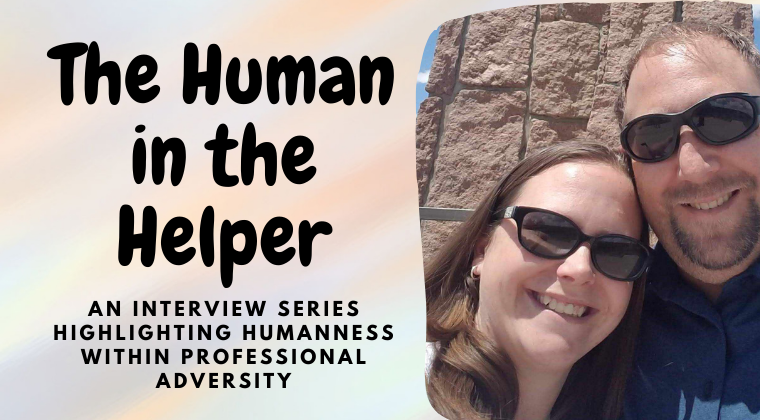Claudia is one of few art therapists in her area, and she’s passionate about helping people paint their process. It’s something that helped her in her own process when her husband died. “The hospice sitters told me when it was okay to sleep, when it was okay to work.” Claudia chose to reduce her private practice caseload in response to her husband’s frequent doctors appointments and the emotional fatigue she was experiencing as the result of his decline. He died at the same time Americans were reeling from 9/11. “It was my own personal 9/11, my own painful loss,” Claudia reflected.
After her husband died, Claudia experienced immense grief. “Grief makes you feel crazy, my thoughts were crazy.” She sat shiva and underwent grief counseling at hospice. Claudia discovered her one and only instance of suicidal thought at this time, before being gently reminded by her doctor that she still had family left. After her own grief counseling, Claudia was asked to lead 4 week art therapy grief groups for others experiencing loss.
In offering a “Painting from the Heart” groups to therapists, Claudia finally felt ready to paint her grief from the loss of her husband. It was powerful, it was visceral, and she finally felt seen by others when they looked at her art. “Then I had enough of drawing the process of grief,” she said. Claudia was missing her family and suggested to her daughter that she’d like to move closer to her. It was then that Claudia closed her private practice to relocate to Denver. A friend supported this decision by sharing her own perspective after the loss of her children. “What are you waiting for?”
Moving to Denver was a process for Claudia, who needed to refer out clients, secure her files, and close the practice to open one in another state. She currently enjoys working with clients who are ready to embrace art therapy or sand tray work to process their feelings. “Painting my process helped me slow down with my clients, to go deeper. The feelings goes from being inside to outside.” Claudia self-discloses with clients when it’s clinically relevant, helping them do their own work when they are ready.
Although Claudia is happy to be closer to her daughter and enjoys her client work, she still finds herself adjusting to a new state. “You become invisible when you become a widow.” She spoke to the shift in dynamics from having friends as a couple to having friends as an individual. Claudia named it’s hard to make friends in a new state, especially at an older age. That doesn’t stop her from being involved in volunteering, community, and choir, which serve as points of connection at this newest stage of her life.
As for colleagues, she has some ideas for fellow professionals going through the loss of a spouse. “Ask for help. Stay on top of finances. Write an ethical will.” Claudia acknowledged the tears that came to her eyes when sharing her ethical will with her family. Unlike a last will and testament, an ethical will speaks to the moral inheritance and qualities passed down to family members. It’s an emotional process of writing out wishes for loved ones and then sharing them out loud with those loved ones. Claudia encourages everyone to engage in this process as part of connection and healing. She also recognizes the importance of utilizing supports for grief work. “Try art. Draw it out or engage an art therapist or sand play therapist.” Going through the loss of her spouse has helped Claudia see her own strengths. “I’m stronger than I ever wanted to be. I can do this. I am doing this.”
Things happen to us as humans, even as we support our clients as professional helpers. Do you have a story you want to share the mental health community? Email us at croswaitecounselingpllc@gmail.com to learn more about the Human in the Helper Series!










